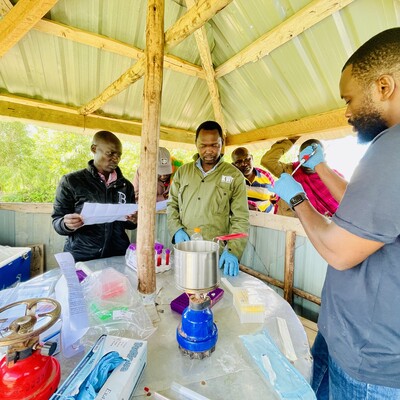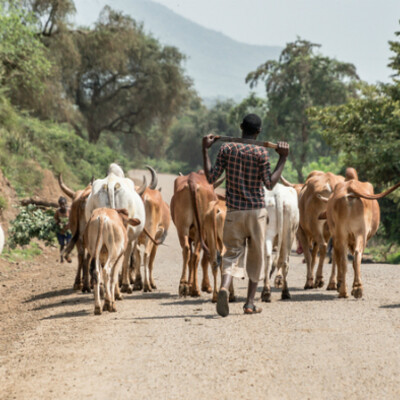
Researchers call for a gendered approach in strategies for community uptake of livestock vaccines

The design of strategies for uptake of livestock vaccines by communities in East Africa should take into account that male and female farmers face different barriers in the uptake of the vaccines, a new research study says.
These barriers include the cost of the vaccines, distances to vaccination points, access to information on vaccination campaigns and decision-making processes at household level. Some constraints affect both men and women while others affect one gender group only, based on prevailing gender norms and division of labour.
The study, published in the journal Vaccines (8 Aug 2019), was undertaken by a team of scientists from the International Livestock Research Institute, Uganda’s Ministry of Agriculture, Animal Industry and Fisheries and the United States Agency for International Development Office of U.S. Foreign Disaster Assistance.
The work was carried out in purposively selected sites, namely, Kwale and Murang’a counties in Kenya and Arua and Ibanda districts in Uganda. The sites in Kenya were selected because livestock there had recently been vaccinated against Rift Valley fever while the sites in Uganda were chosen because they had experienced recent outbreaks of the disease but no vaccination was carried out. Data were collected through 58 focus group discussions (30 in Kenya and 28 in Uganda), with 8–12 discussants per group.
The researchers found that women in Kwale experienced more difficulties than their male counterparts in accessing information on vaccination campaigns while women in Ibanda had limited decision-making capacity over the management and control of livestock diseases because of culturally defined livestock ownership patterns.
The cost of vaccines was a greater barrier for men than for women because the role of managing and controlling livestock diseases in these communities was culturally ascribed to men.
To be effective, therefore, livestock vaccination campaigns need to consider the socio-cultural gender dynamics that exist at household and community level. It is not enough to merely provide vaccines to the community during mass campaigns.
“Availability of vaccines does not guarantee uptake at community level due to social, spatial, economic and vaccine safety and efficacy barriers faced by men and women farmers,” the researchers note.
They add, “Vaccine uptake is a complex process which requires buy-in from men and women farmers, veterinary departments, county/district governments, national governments and vaccine producers”.
Citation
Mutua, E., Haan, N. de, Tumusiime, D., Jost, C. and Bett, B. 2019. A qualitative study on gendered barriers to livestock vaccine uptake in Kenya and Uganda and their implications on Rift Valley fever control. Vaccines 7(3): 86.



















